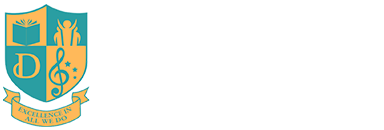Computing
Intent
Our goal is to provide all pupils with fantastic learning opportunities that inspire curiosity, creativity, and problem-solving skills, helping them become confident computational thinkers.
Our computing curriculum is designed to progressively develop children’s knowledge of computer science, digital literacy, and information technology to enable them to safely and confidently utilise technology.
Pupils' growth of procedural knowledge in information technology supports them in creating digital artefacts, and in developing as active participants in a digital world. Our curriculum explicitly teaches how to use technology safely and respectfully, to critically examine content, and to recognise and avoid potential dangers online.
By the end of Year 6, we aim for every pupil to:
-
Be digitally literate: able to use technology to express themselves, develop ideas, and communicate effectively. This way, they will be prepared for the future workplace and ready to engage as active participants in a digital world.
-
Understand core computer science principles: including abstraction, logic, algorithms, and data representation.
-
Think computationally: analysing problems logically and gaining hands-on experience in coding and programming to develop practical solutions.
-
Apply information technology effectively: using both familiar and emerging technologies to solve real-world problems.
Through this approach, we ensure that all pupils become responsible, competent, confident, and creative users of technology, equipping them with the skills they need to thrive in an increasingly digital world.
Implementation
We teach our computing curriculum through Purple Mash, a purpose-built platform which allows pupils to access and apply knowledge for each of the three curriculum strands in different contexts. The Purple Mash platform has been chosen for its focus on domain-specific knowledge and for its programming language, which allows pupils to engage with wider algorithm design not facilitated by other block-based programmes.
The computer science strand contains the foundational knowledge required to gain digital literacy, therefore, each year’s curriculum begins with a computer science unit. Computing is taught weekly in defined units of work: computer science, then digital literacy, and information technology is taught as the third unit each year.
The build up of e-safety knowledge, within our digital literacy units, is carefully selected for each year group to ensure that the delivery is both appropriate for the children’s stage of development, and substantial in content. Assessment in computing is an assessment of learning, rather than of final product.








